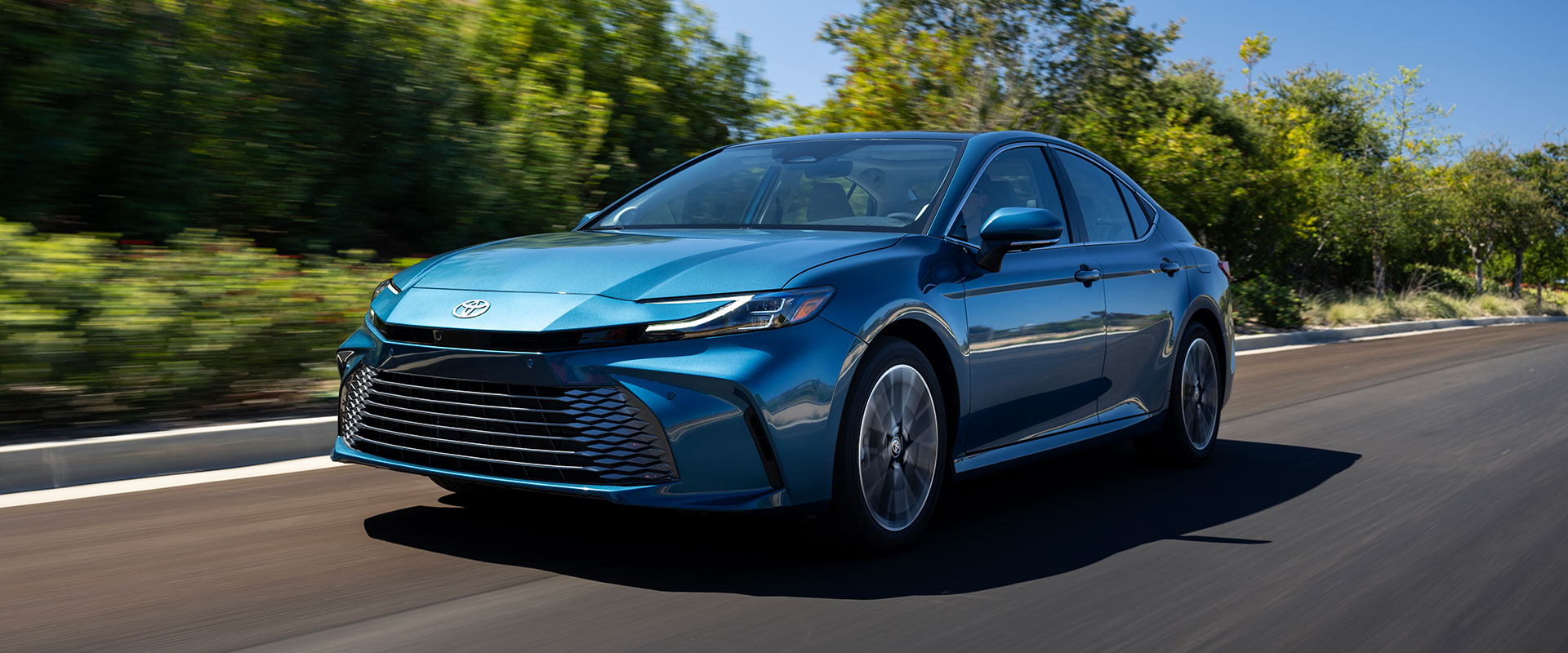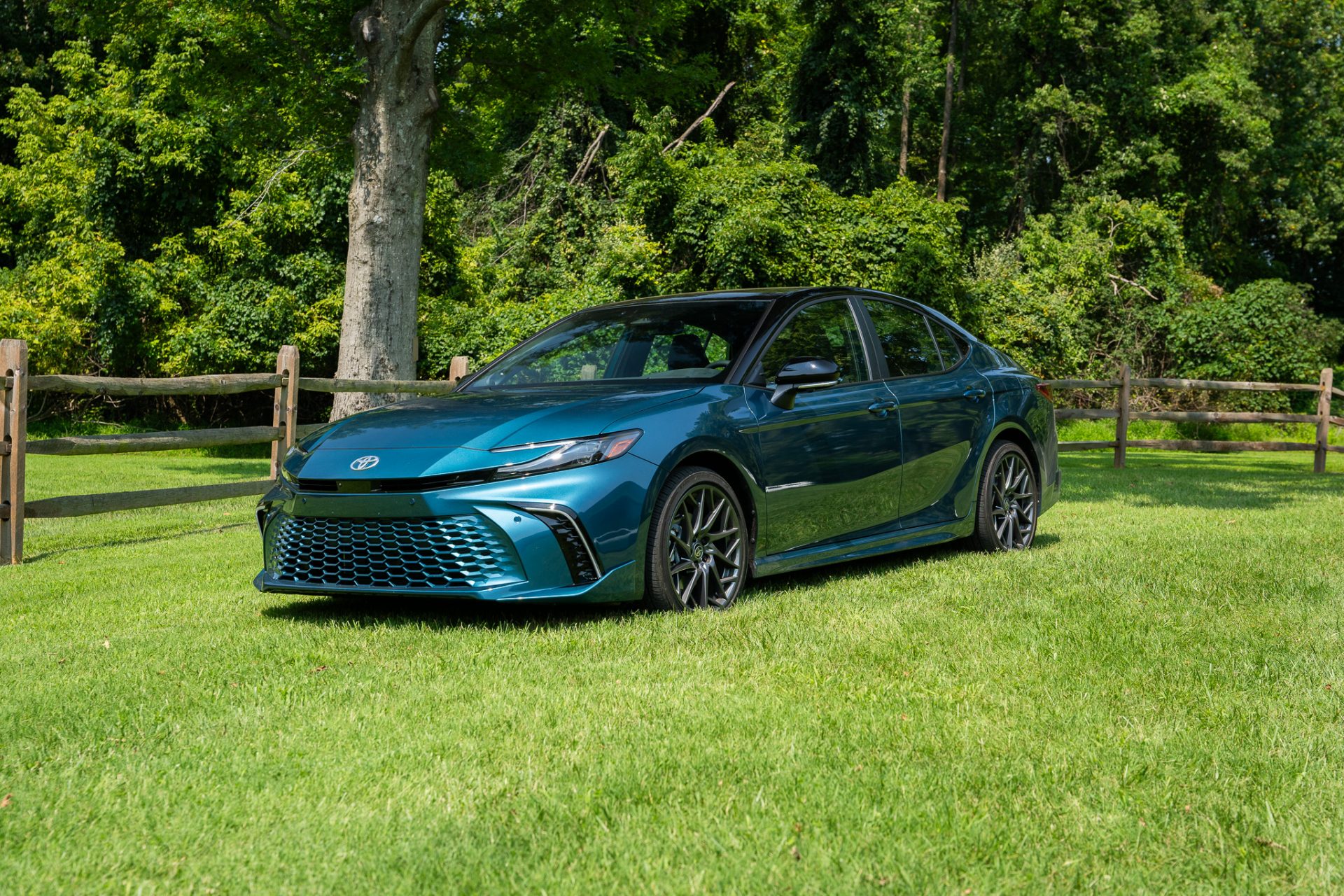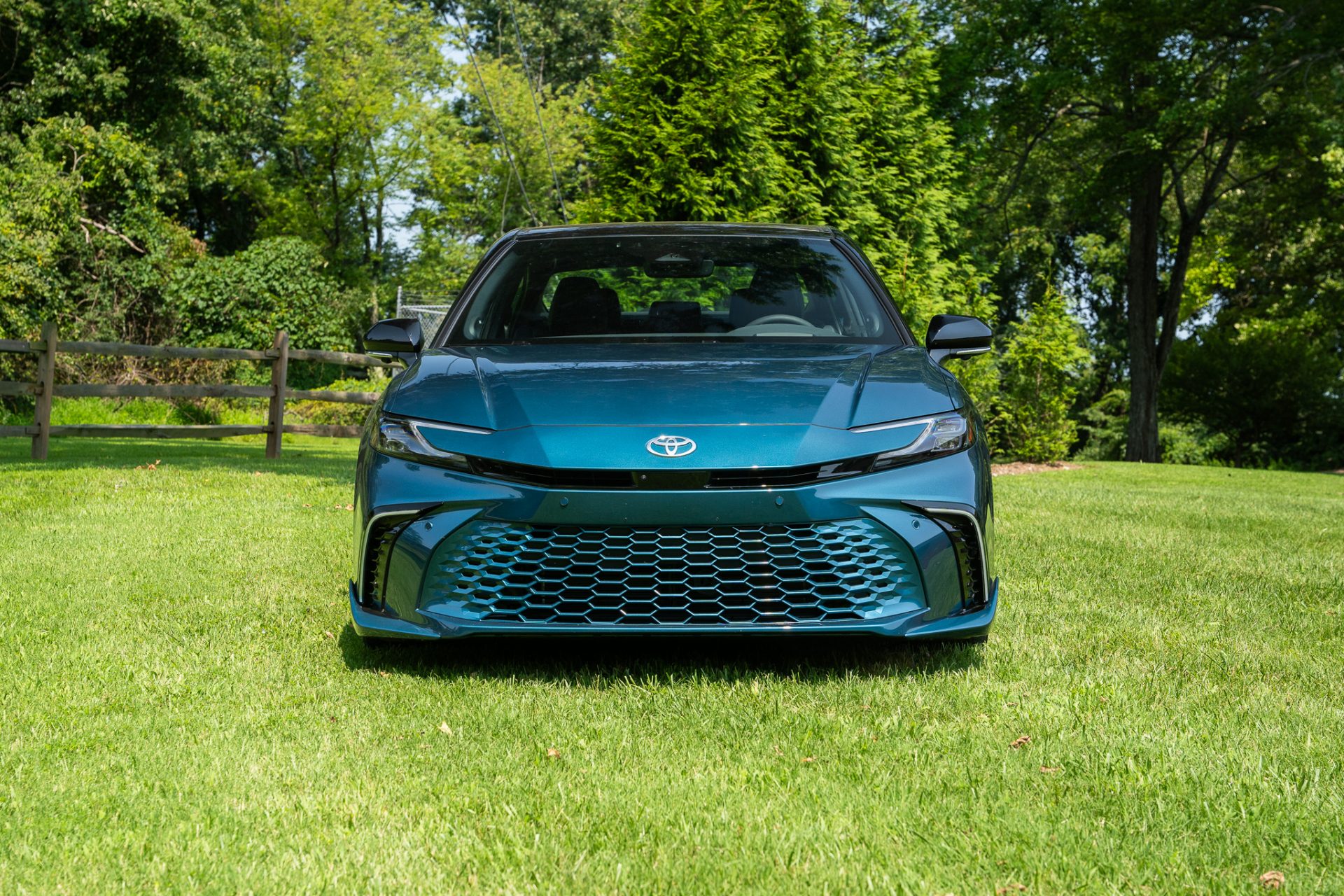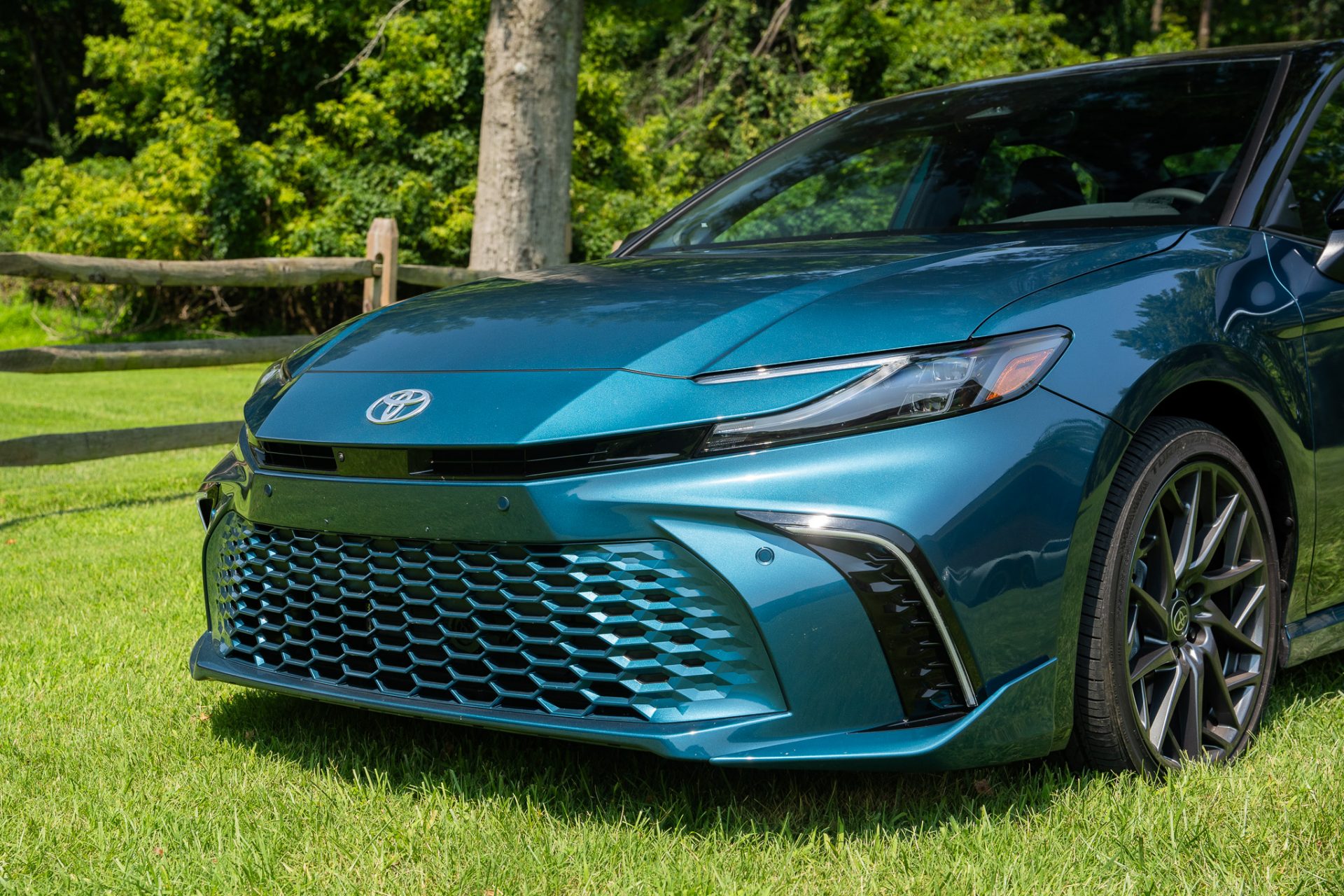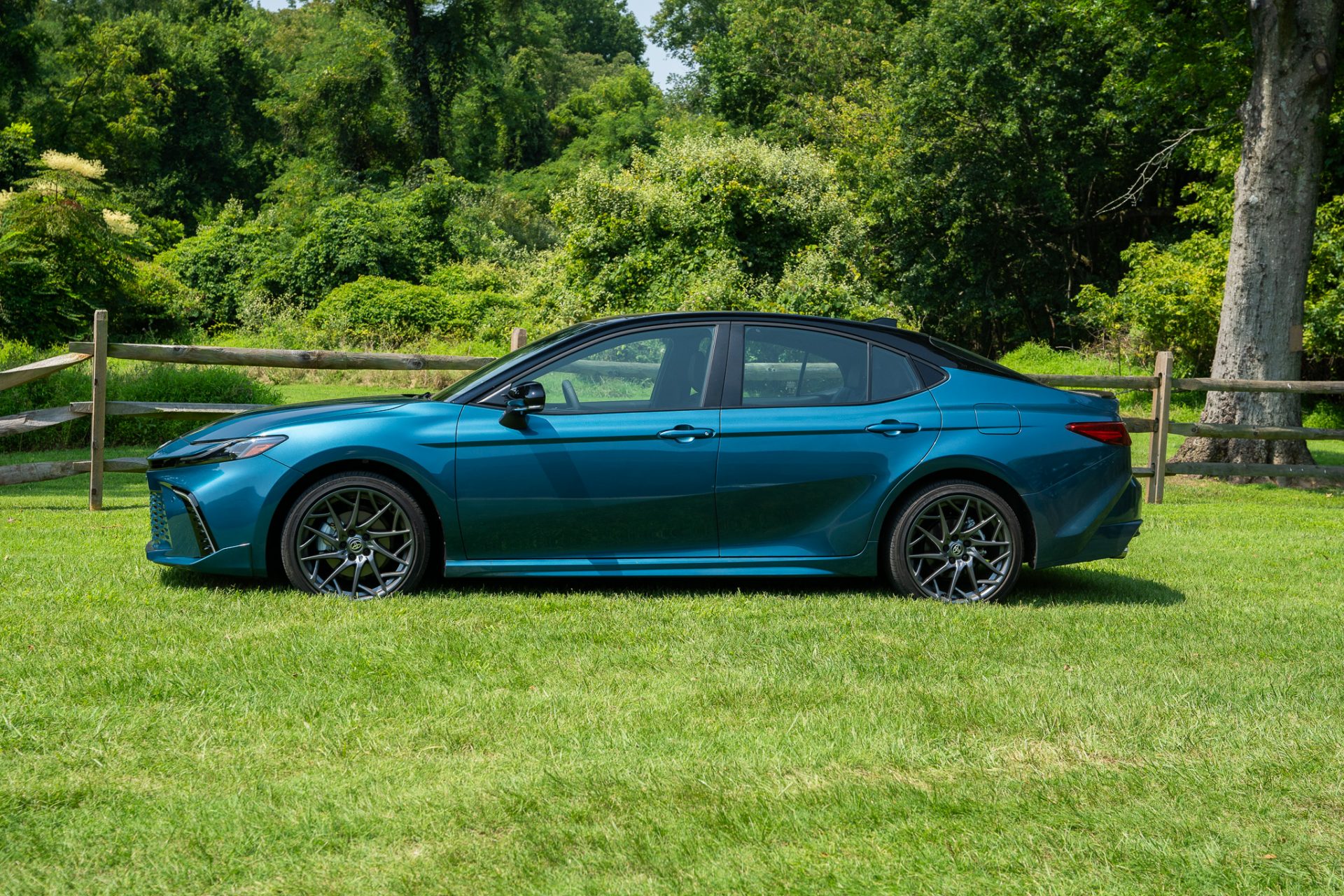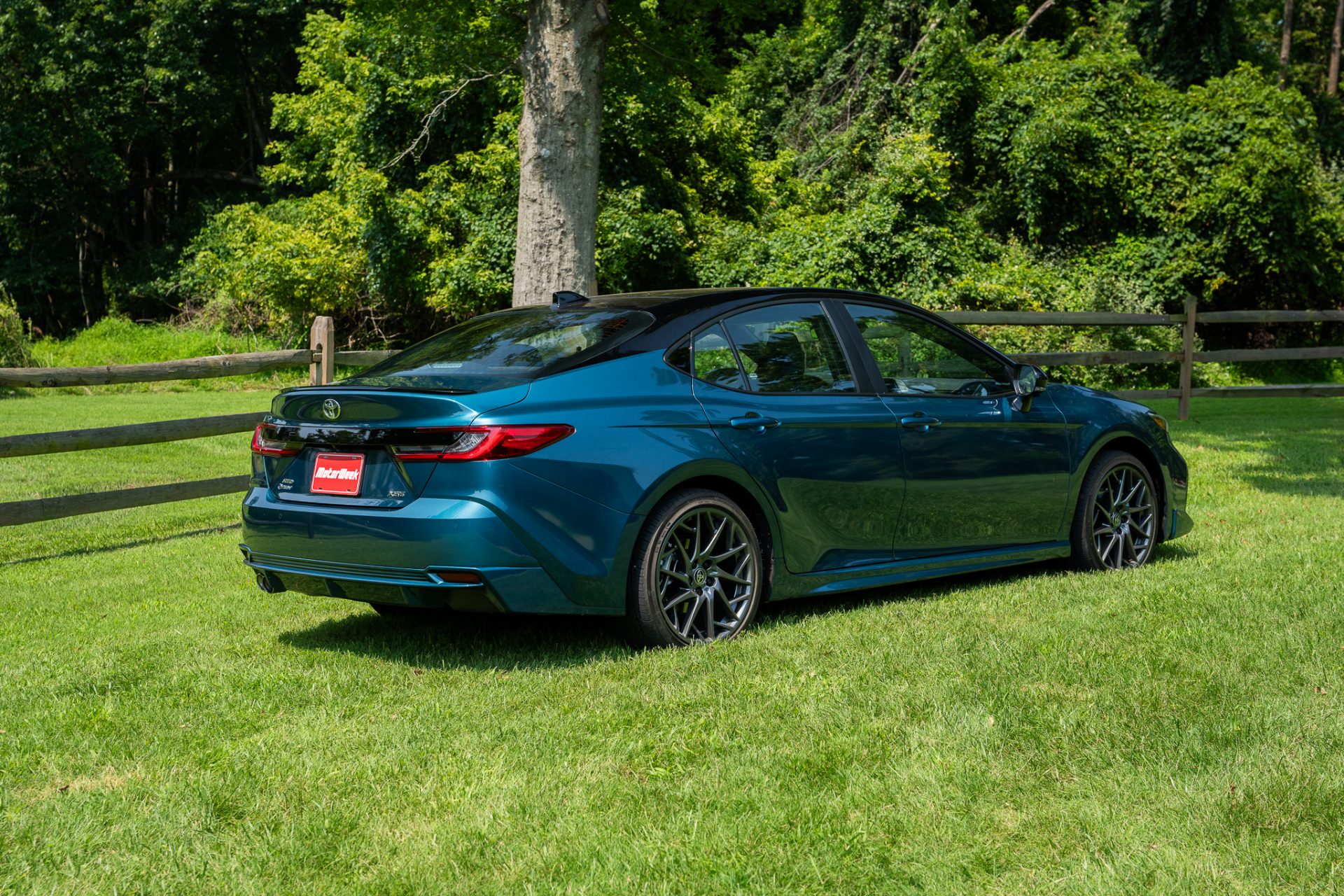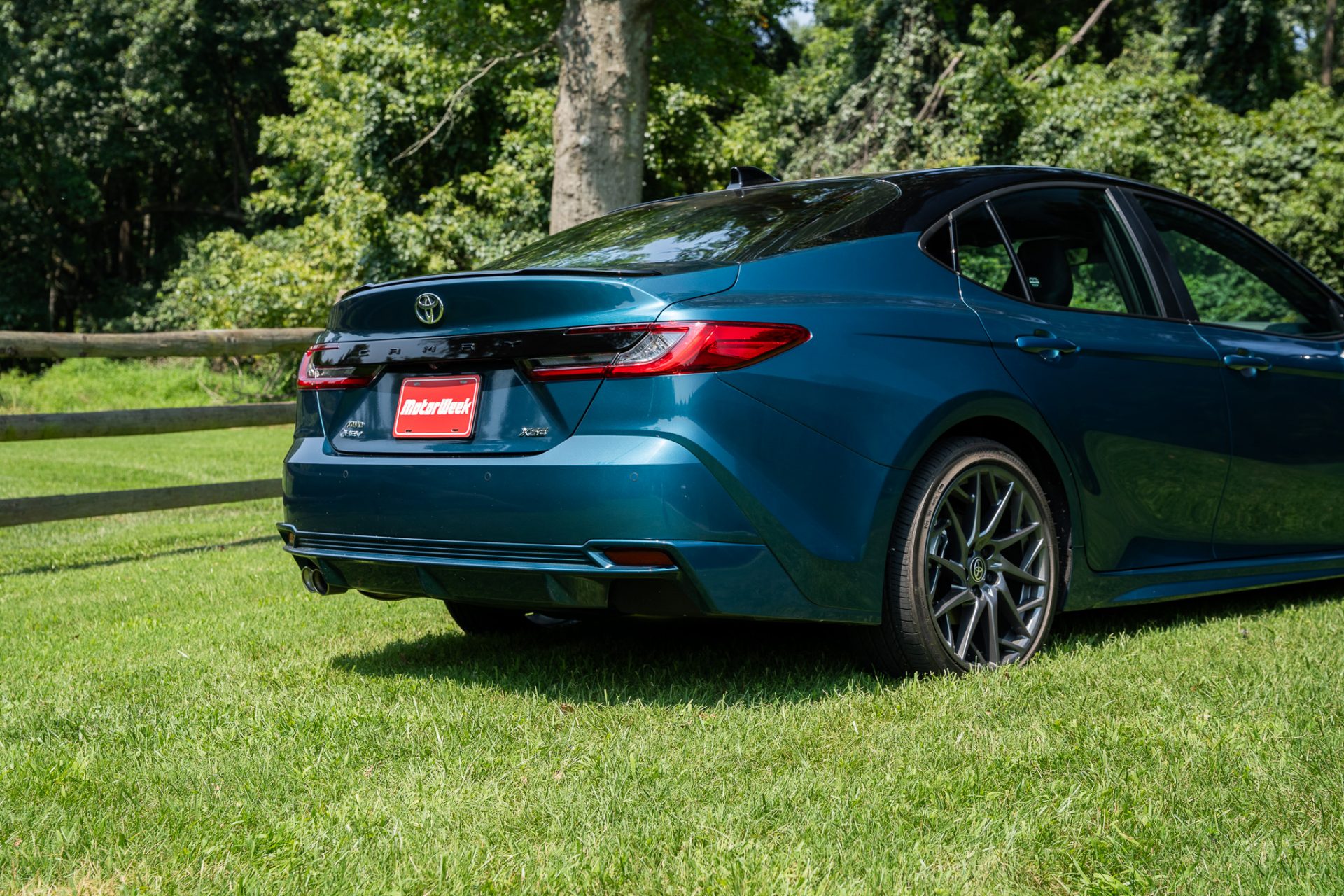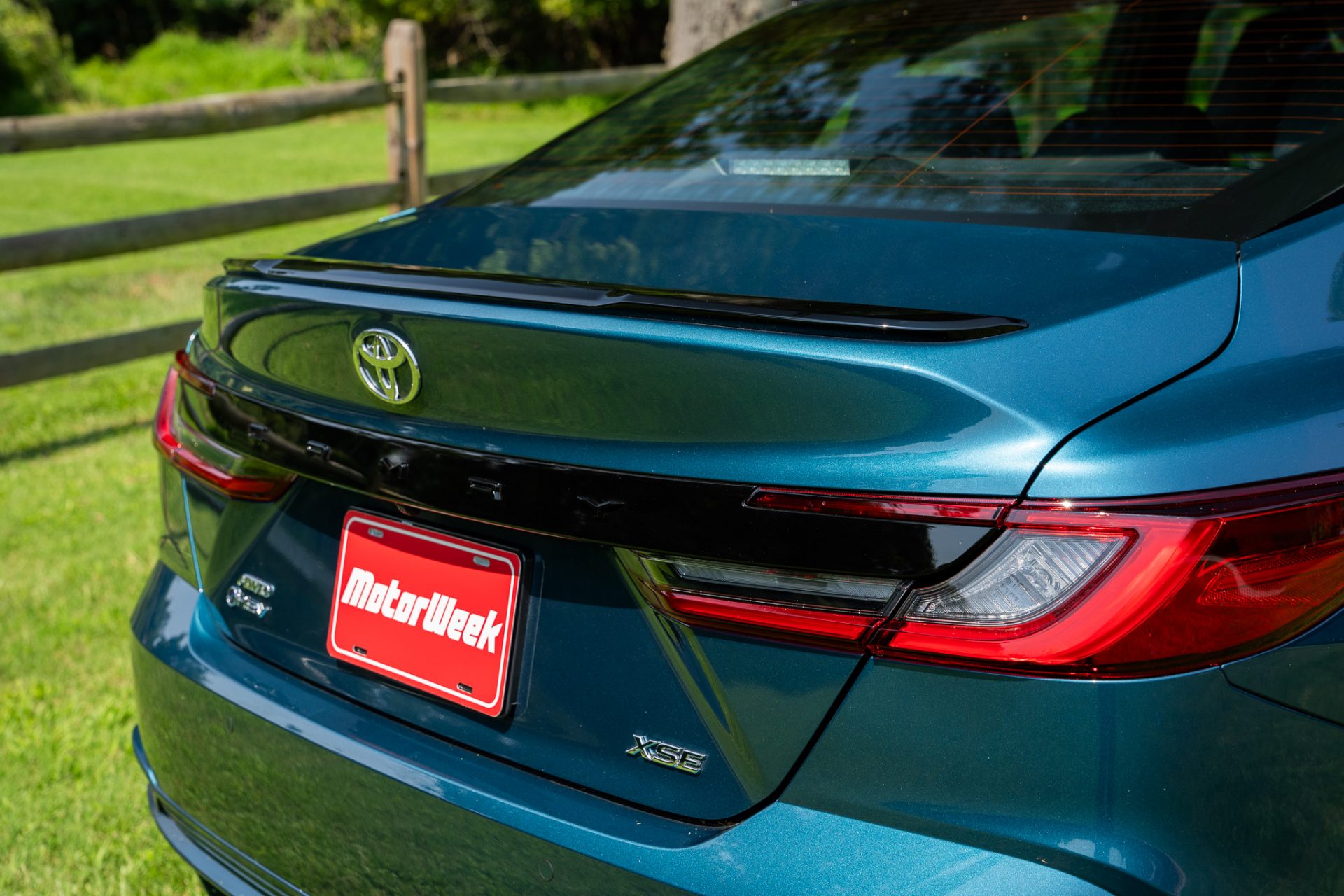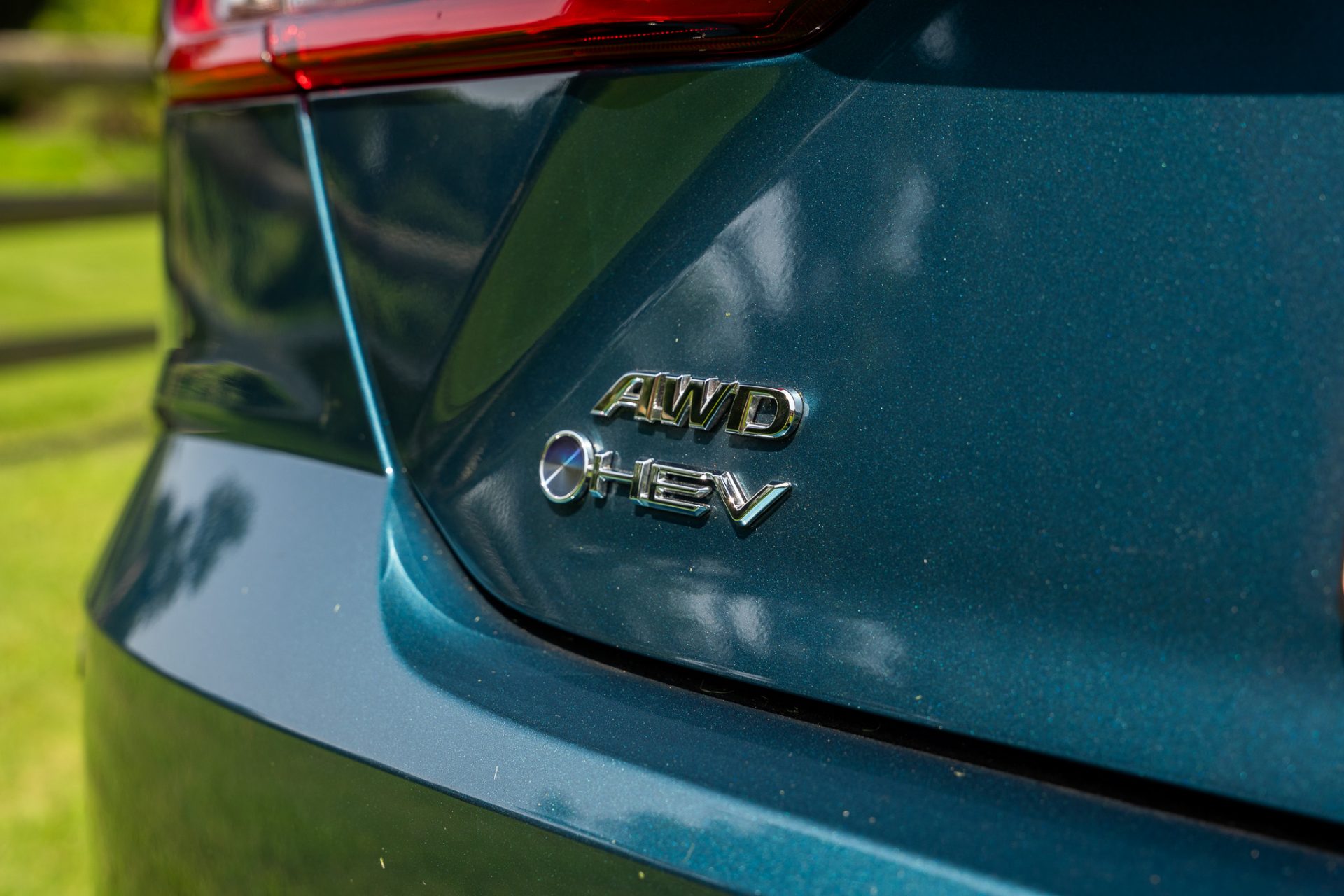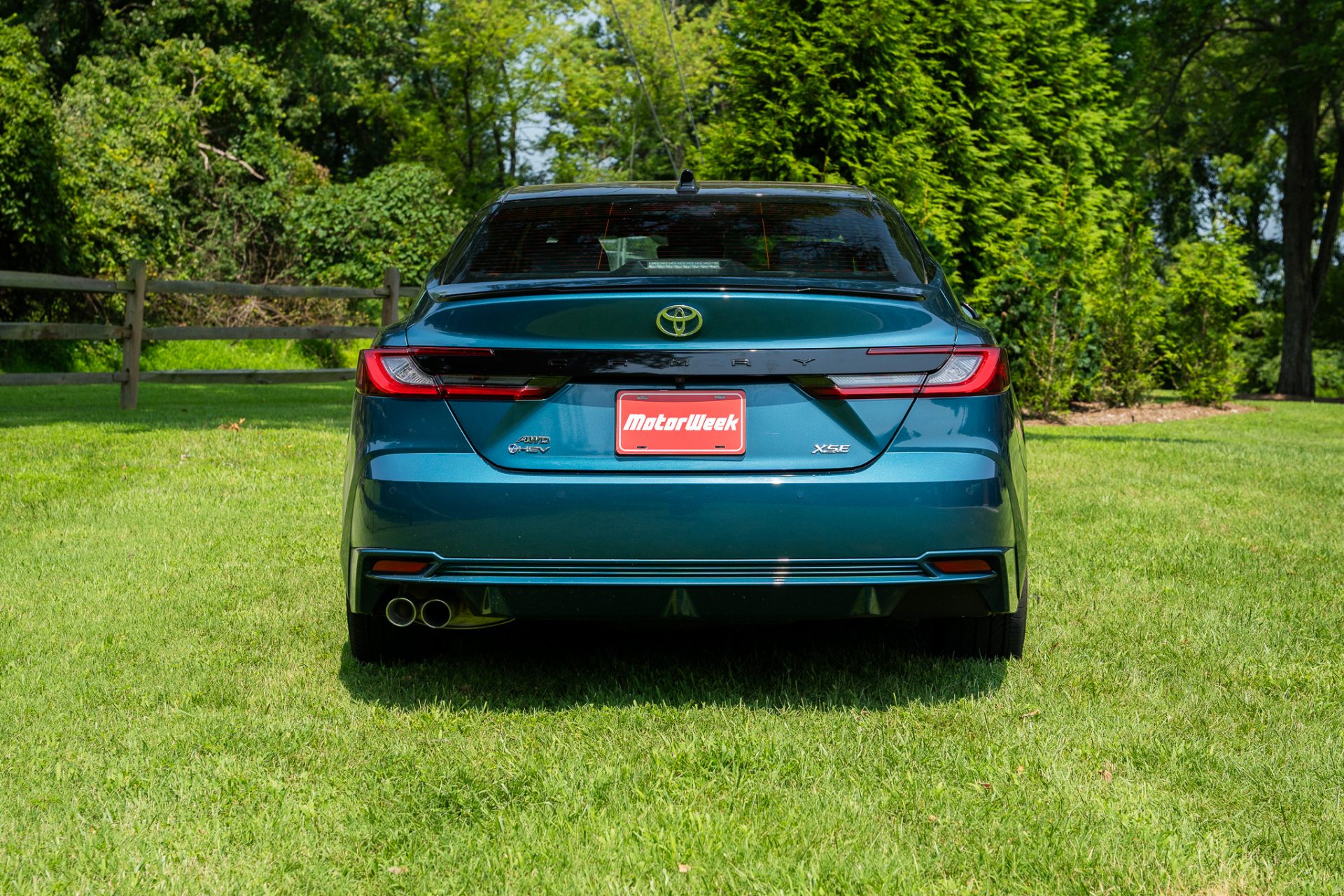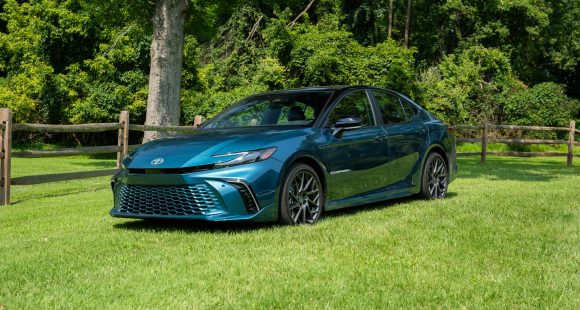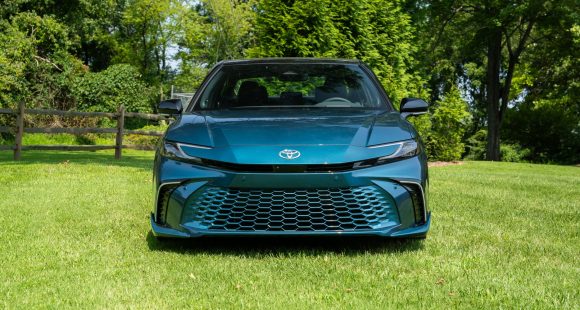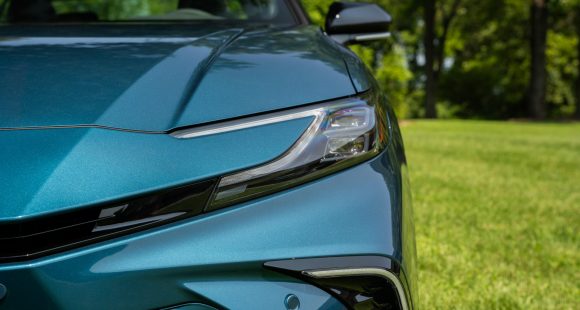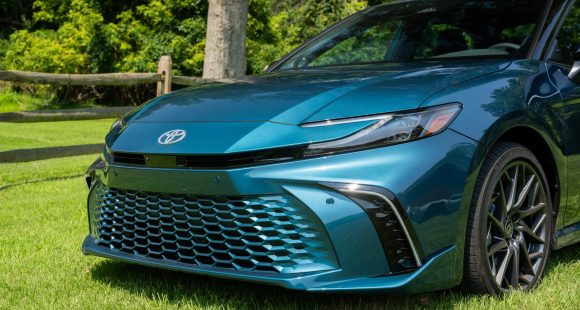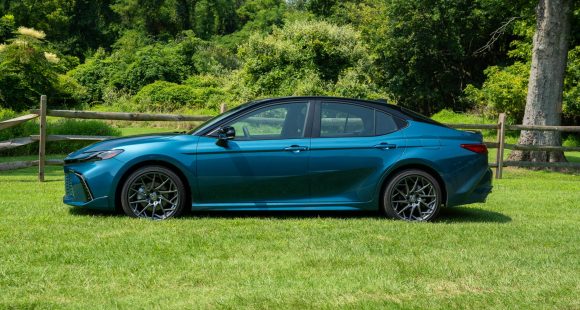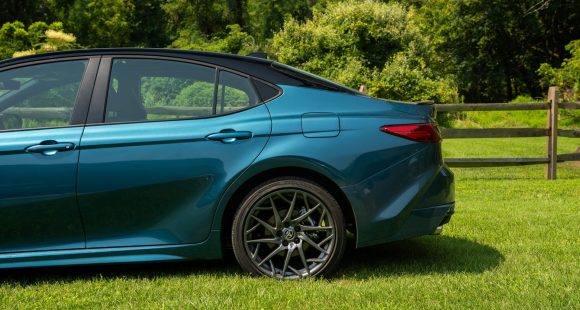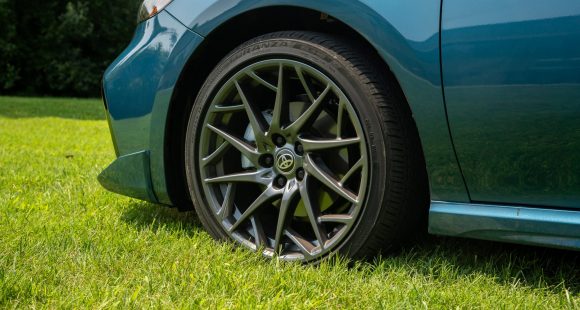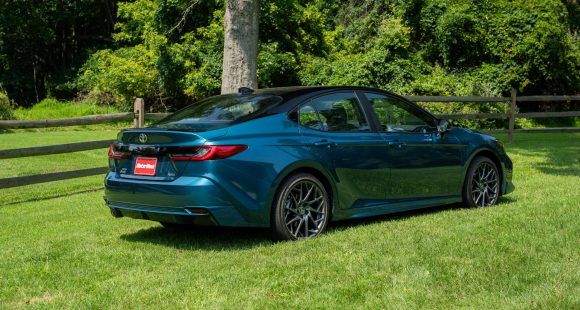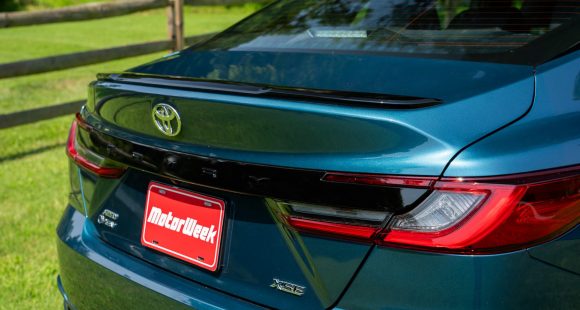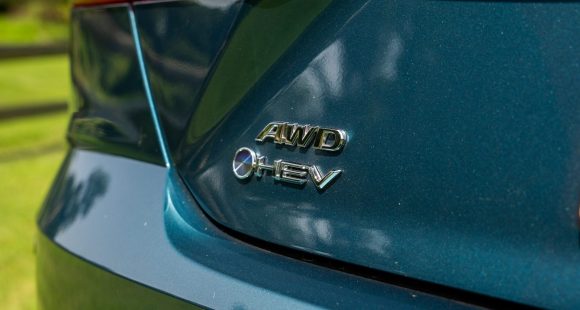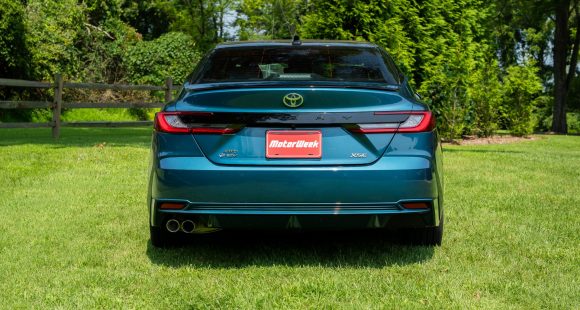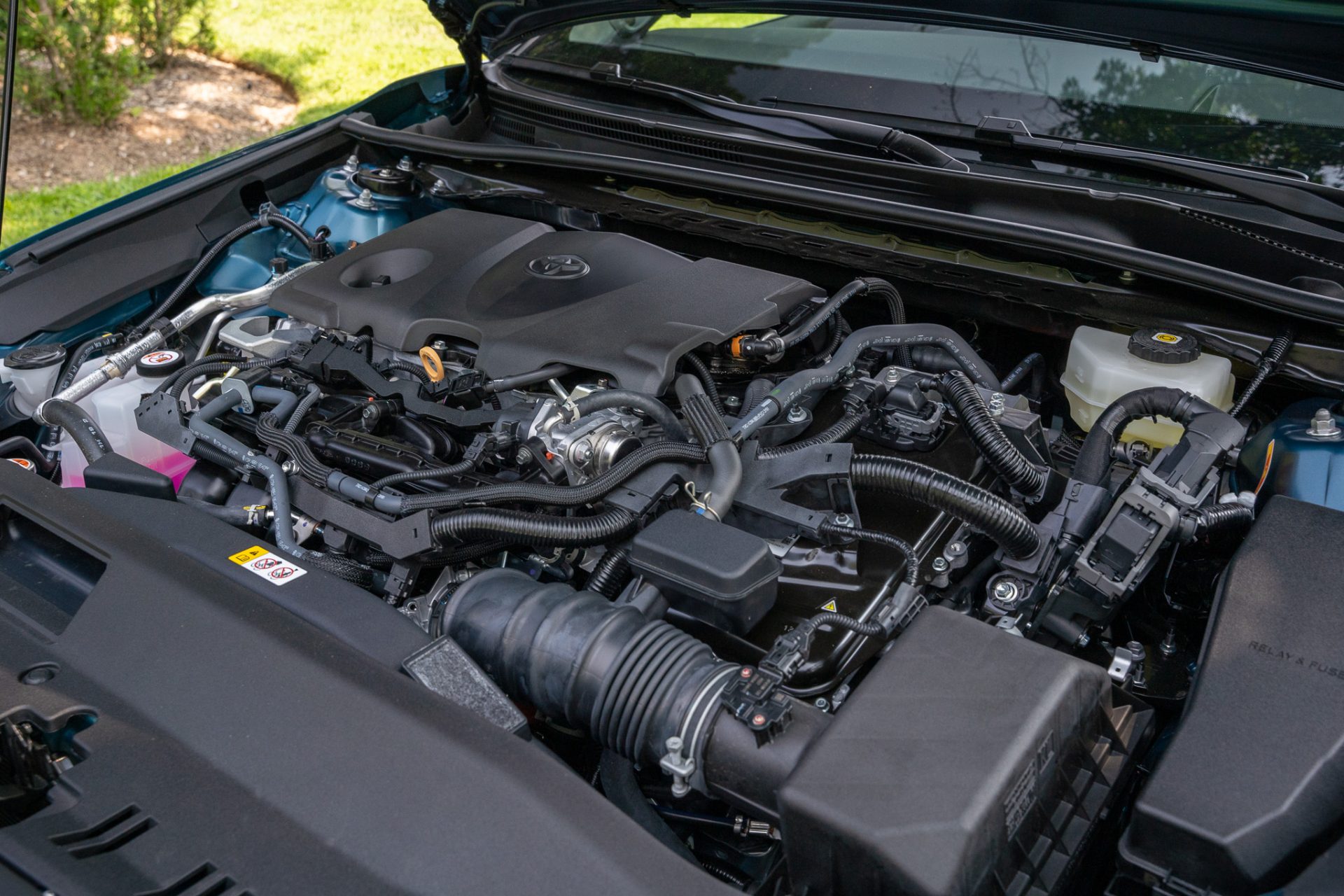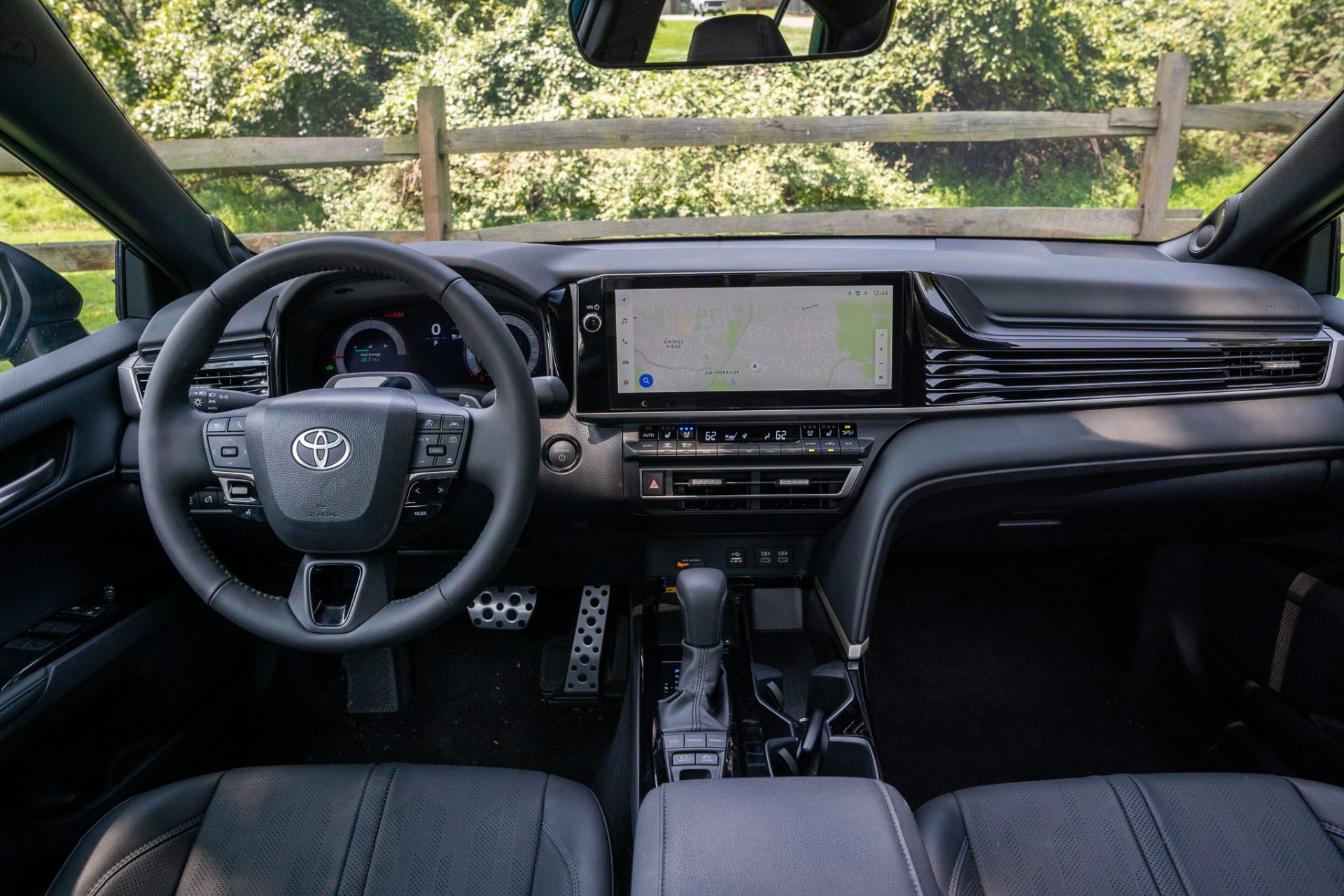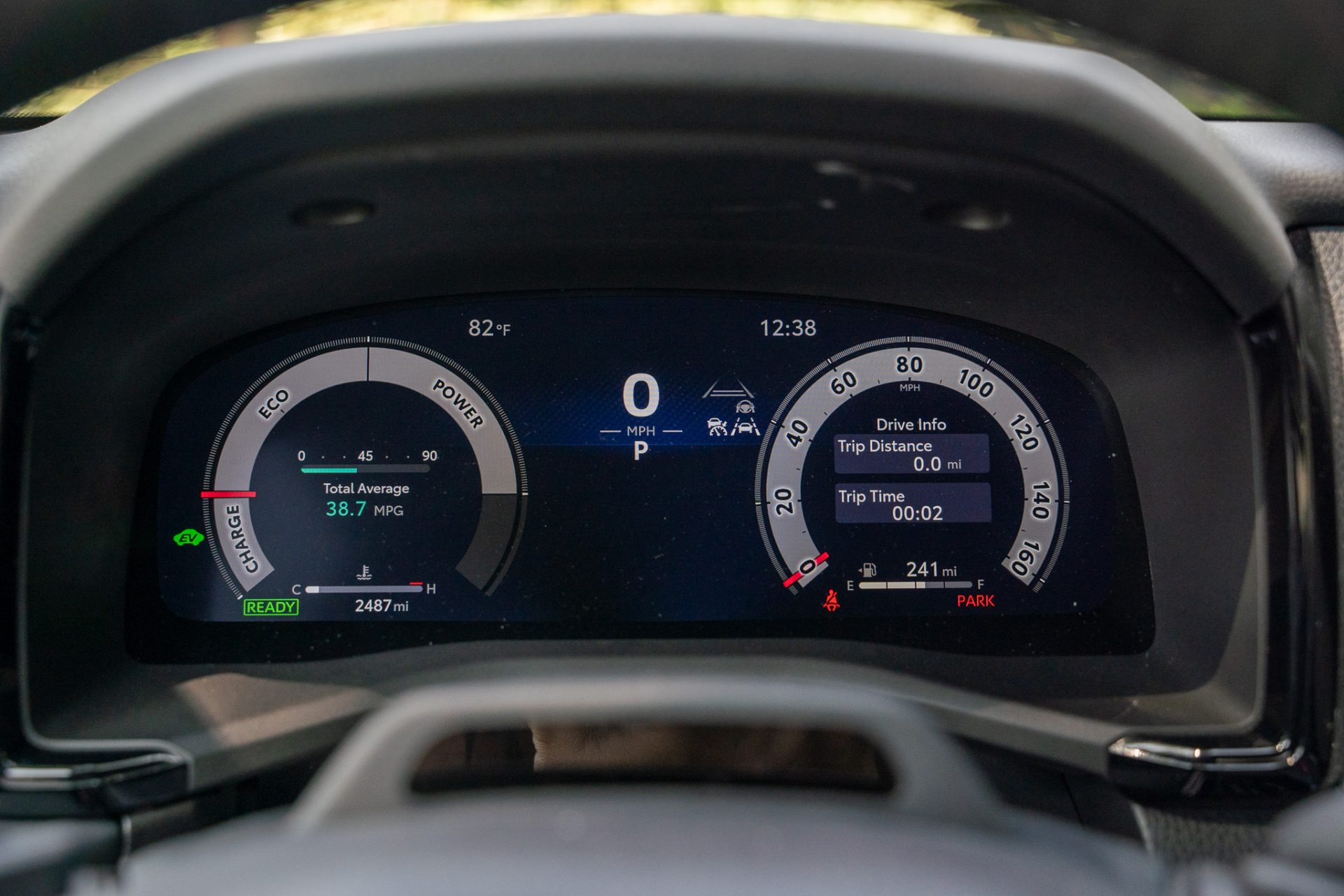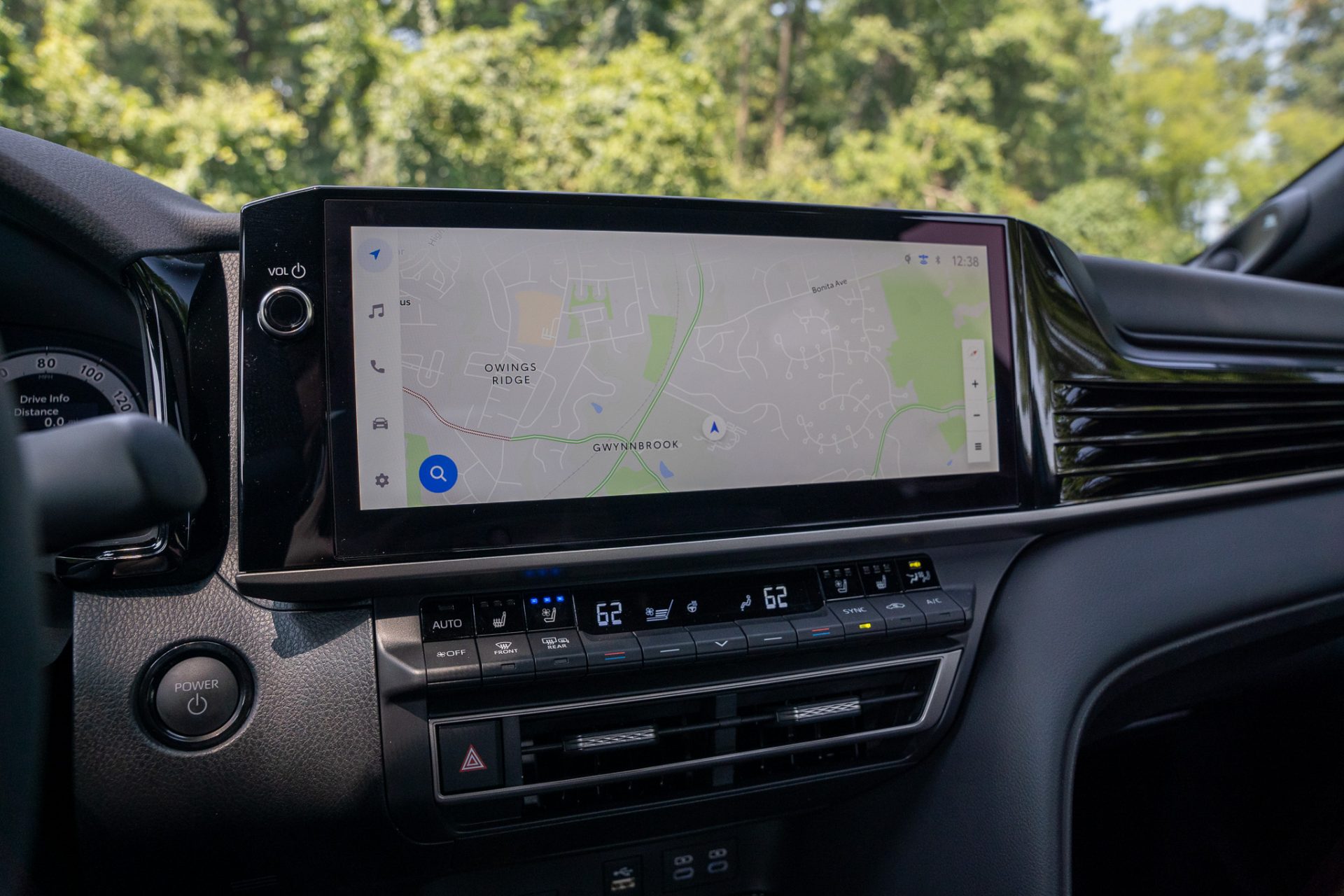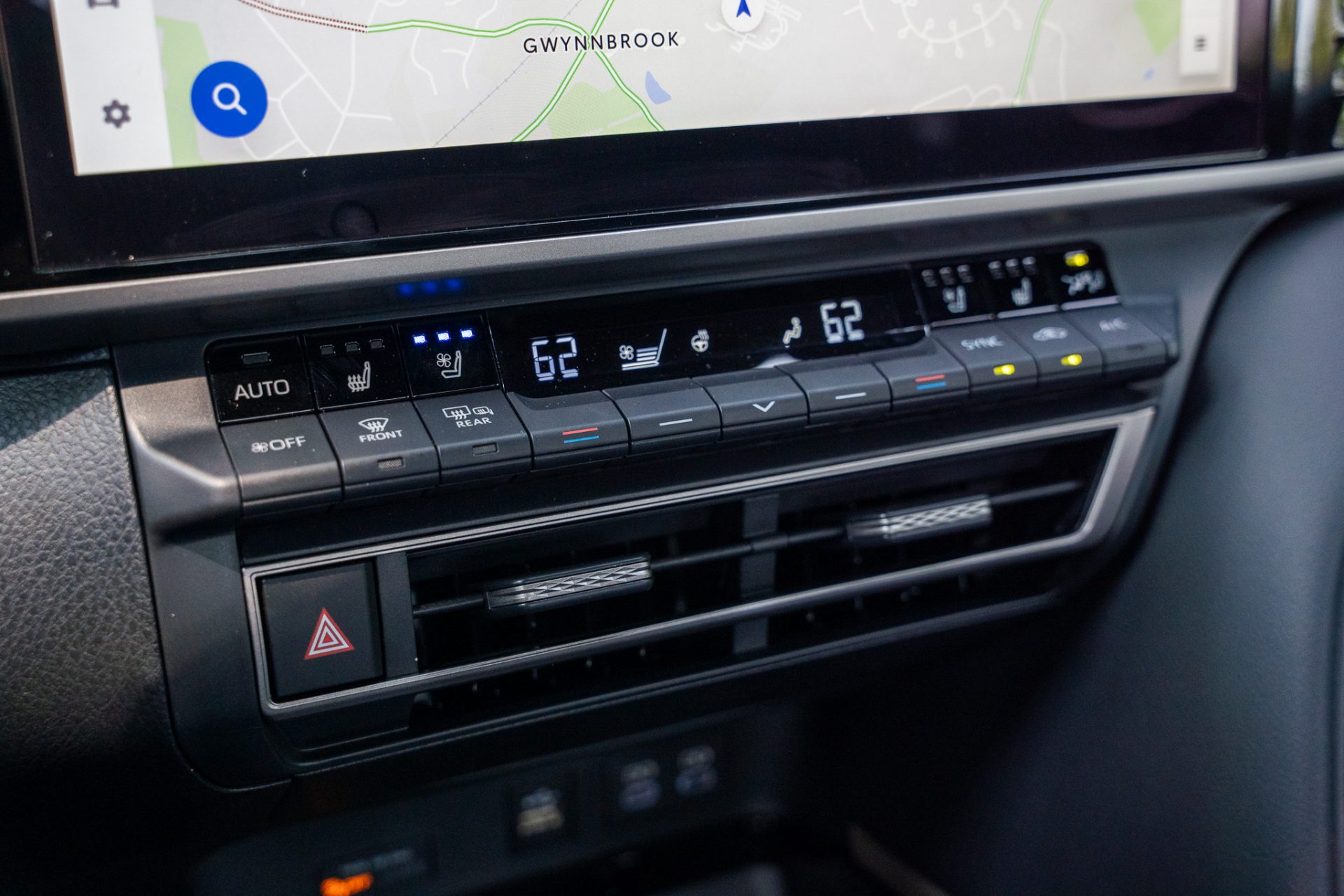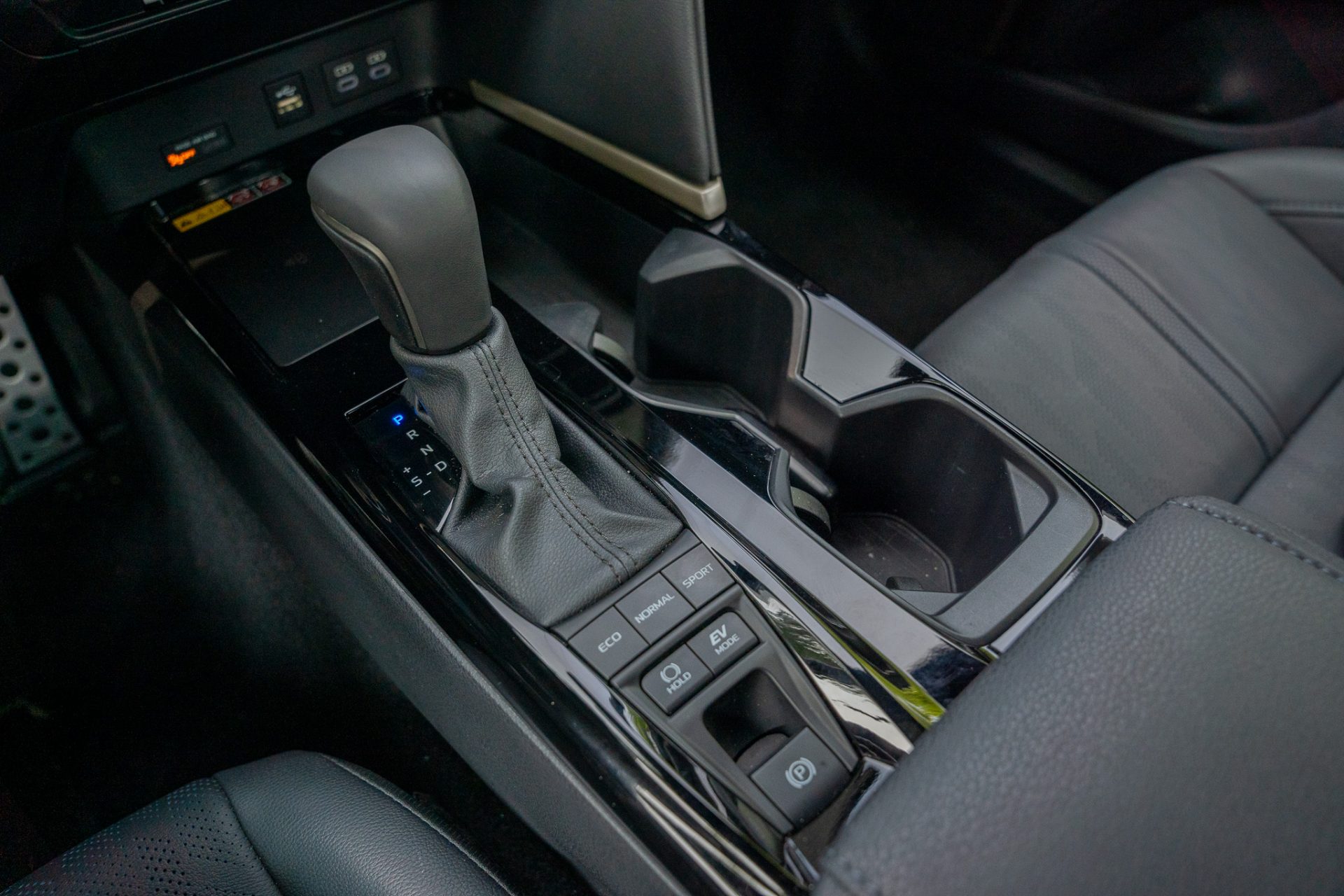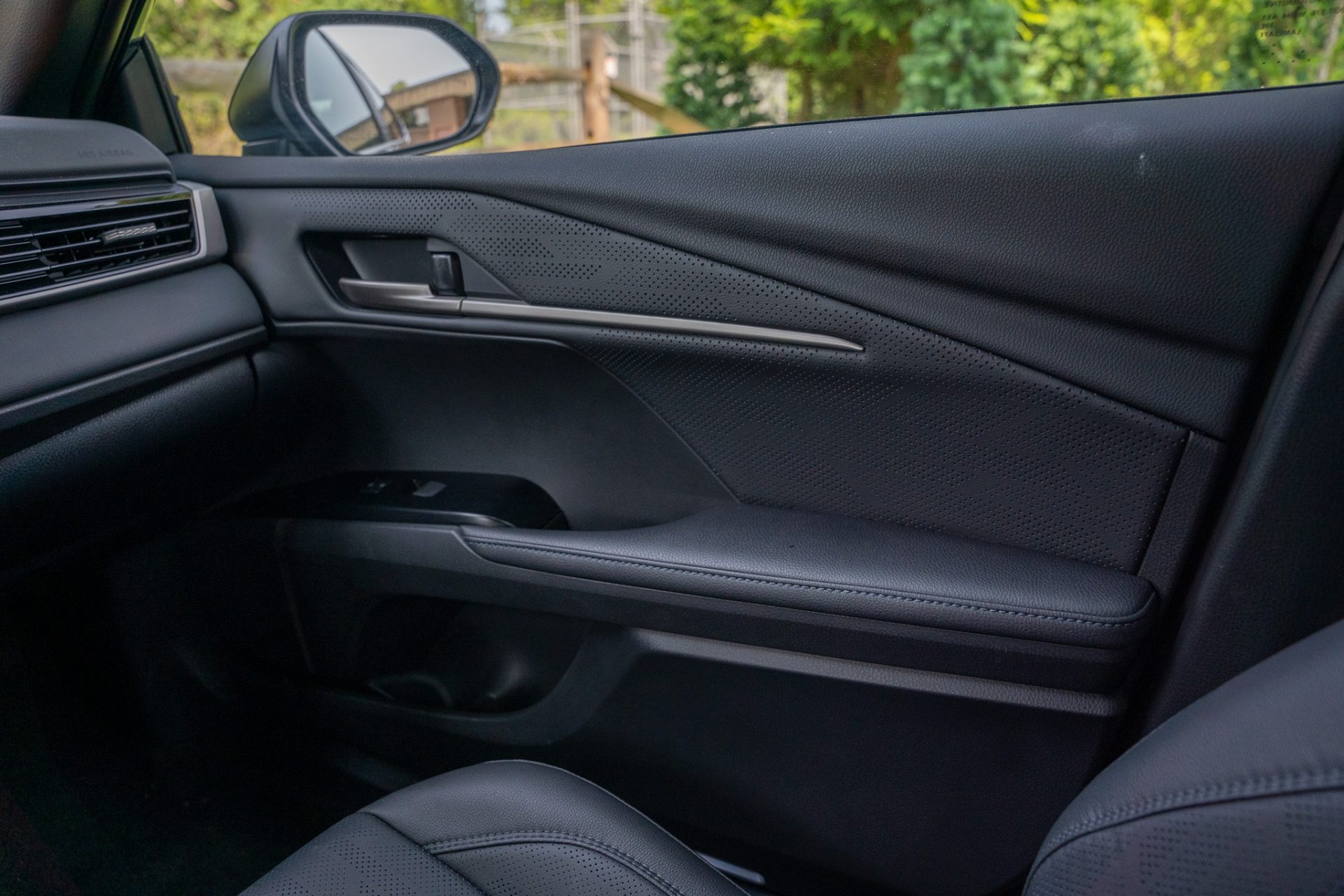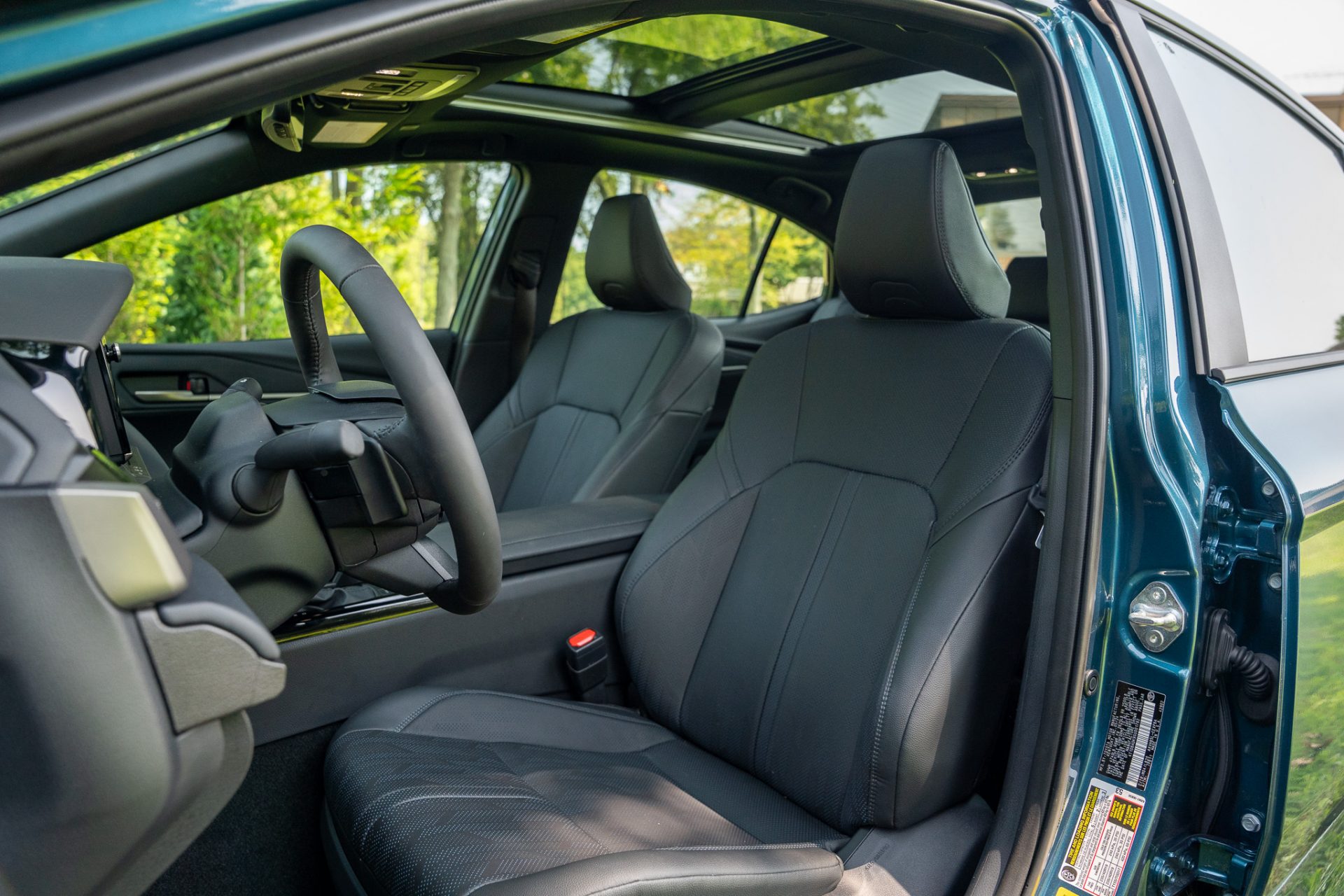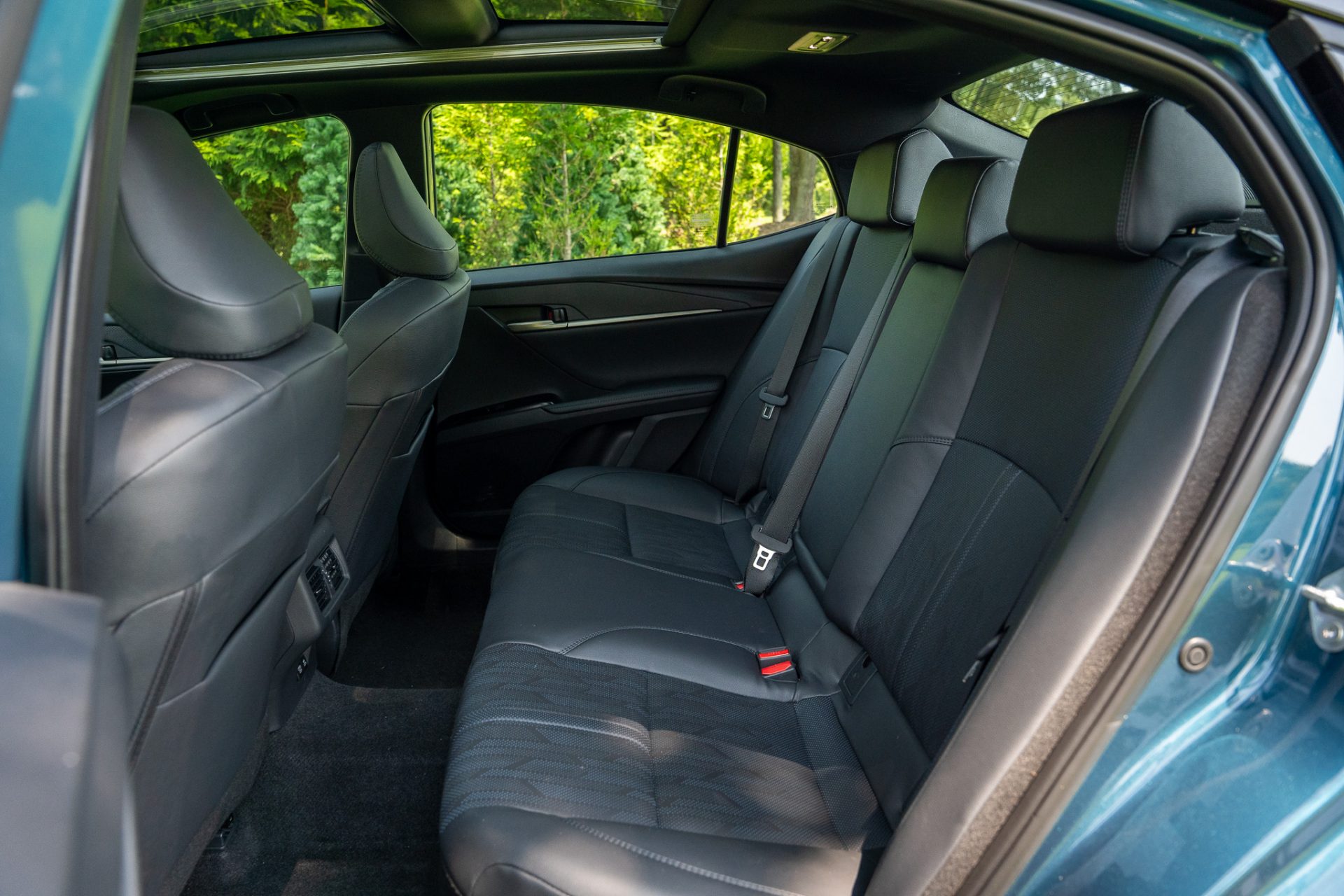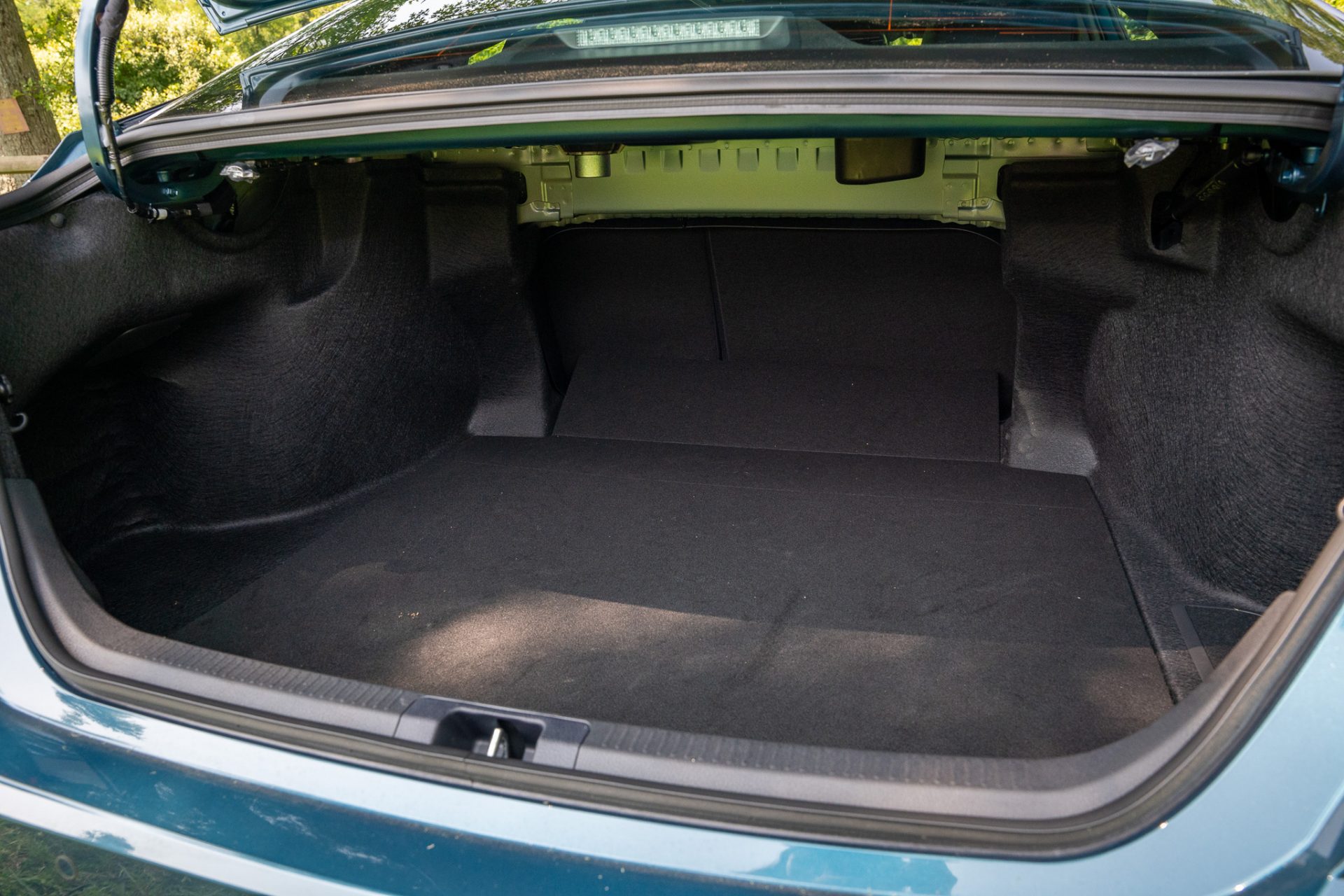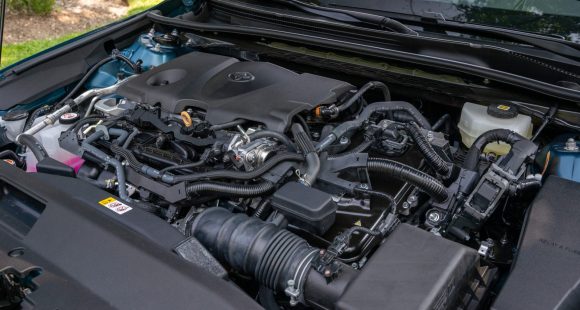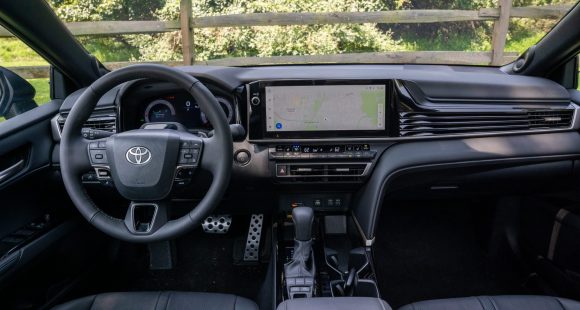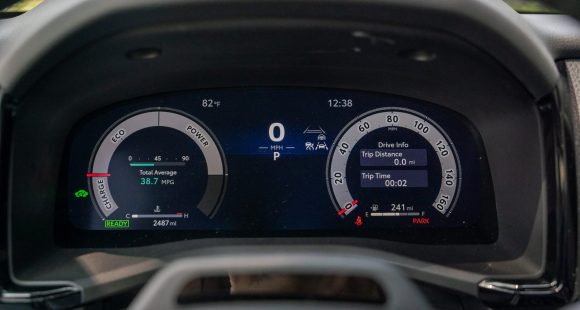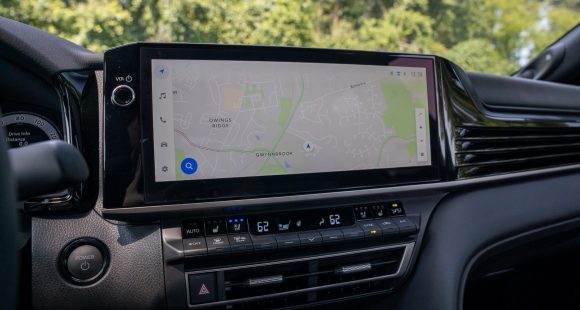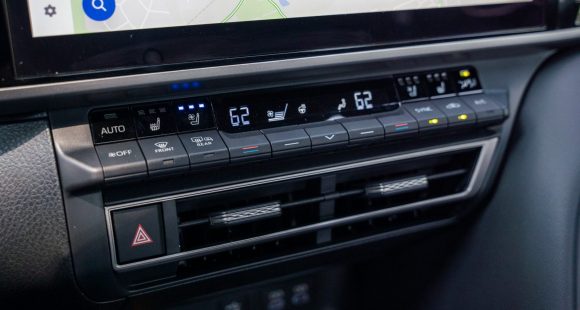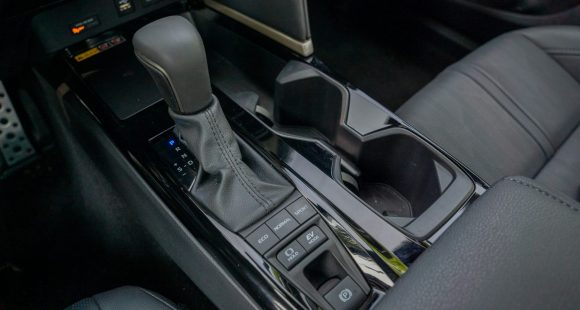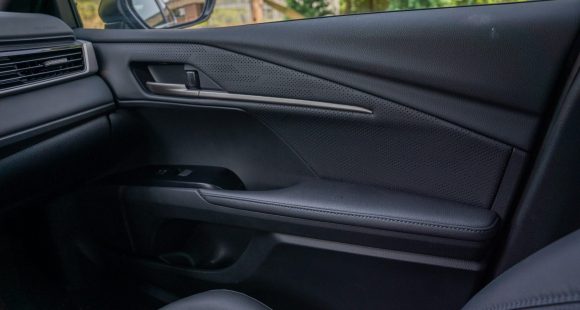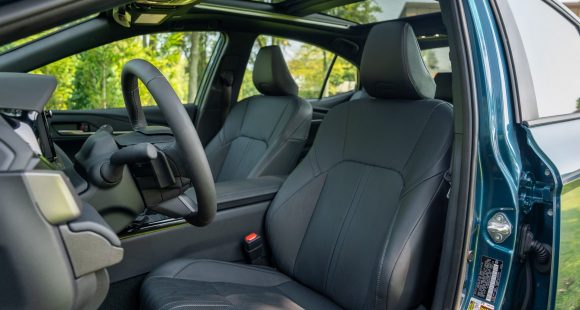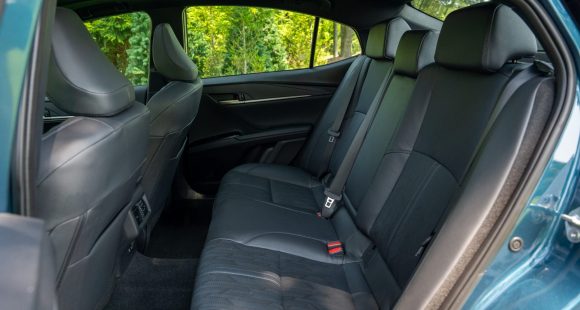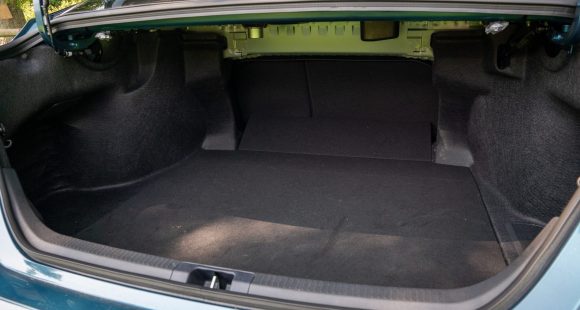2010 Kia Forte
Ever since Hyundai acquired rival Kia, it’s been a full throttle effort to transform the Korean brand’s image from a maker of inexpensive, basic use vehicles, to a high quality, mainstream mark. But their latest effort, the compact Forte, goes head-to-head against industry benchmarks Toyota Corolla and Honda Civic. While the Forte is clearly the most handsome Kia small car ever, it needs more than looks to stay in this race.
The all-new 2010 Forte is a breath of fresh air for the Kia lineup, and simply saying it replaces the generic Spectra would grossly underrate its potential impact.
Available now in a Sedan and Koup, with a “K”, its slightly edgy, American-sourced styling strikes a richer stance than any other Asian mass market small car.
The front-end of our test Forte Sedan, with its flared headlamps, smart-looking grille, and clam shell hood, does have a passing resemblance to the Honda Civic.
But, the well drawn character lines, and up swept side glass, give the Forte Sedan a sharp profile that is its own, and 15, 16, and 17-inch wheels and tires, along with a beefy rear-end, with wrapped and sectioned taillamp housings, cement the image of a well built small sedan.
The front drive Forte finds power from two variable timing I4s. LX and EX trim use a 2.0-liter with 156 horsepower and 144 pound-feet of torque. Our SX sports a 2.4-liter with 173 horsepower and 168 pound-feet of torque. That beats the Toyota Corolla XRS.
 A five-speed manual is standard, with an optional four-speed automatic for LX and EX trim. The SX starts with a 6-speed manual, with a 5-speed automatic on our car.
A five-speed manual is standard, with an optional four-speed automatic for LX and EX trim. The SX starts with a 6-speed manual, with a 5-speed automatic on our car.
Even with more power, Government Fuel Economy ratings for our SX are class competitive at 23 city/31 highway using regular gas. We managed an okay 27.6 miles per gallon in real world driving.
The Forte’s Energy Impact Score is 13.2 barrels of oil consumed per year, with a concise Carbon Footprint of 7.1 annual tons of CO2 emitted.
But, that car will be more sluggish than our SX which still needed 8.9 seconds to accelerate from 0 to 60, finishing the quarter mile in 16.8 seconds at 84 miles per hour. Off the line, the Forte felt energetic, with a good hookup, and steady power build. But the pace was hurt by slow shifts. And, while Kia engines have come a long way, our car’s 2.4 was still buzzier and less refined than top rivals.
Ride and handling show even more improvement. The Forte’s front strut and rear torsion beam suspension adds standard Electronic Stability and Traction control. A high value plus over most rivals.
And it showed. Through the cones our car felt very solid, with no flexy or flimsy feel. Steering is nicely responsive. Front push does come on quickly, so Forte is not as nimble or fun-to-drive as the all-independent Civic. But, it gets through with less body roll.
On more typical pavement, we found the Forte’s ride to be more sophisticated than we expected as well. Not soft, but not stiff either. Here, the Forte is more akin to the Corolla XRS.
The Forte’s Brakes are well above class average. Four-wheel discs with standard ABS and Brake Assist. Hard stops proved short at only 122 feet from 60. Stability was great. The pedal could have more feel but that’s a nit-pick.
The Forte’s cabin matches the exterior. It’s far more inviting than the Spectra, with a Civic and Corolla beating 96.8 cubic feet of passenger space.
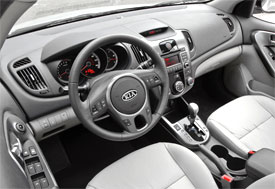 The dash design is a toned-down version of the Kia Soul, with its overlapping gauges and boogey-board shaped center stack.
The dash design is a toned-down version of the Kia Soul, with its overlapping gauges and boogey-board shaped center stack.
Seats are comfortable and well formed with leather an option on our top-level SX, which also included a tilt/telescoping steering wheel.
Forte standard equipment includes six airbags, a CD/MP3/satellite radio, USB port, and Bluetooth. But, air conditioning is an option on the LX.
The rear seats offer decent legroom - even for a six footer - as well as a standard 60/40 split folding feature which extends an already highly useful 14.7 cubic foot trunk.
Pricing for the Kia Forte starts at $14,390 for the LX. That’s over $1700 less than the less well equipped Corolla and Civic. The spread widens with the mid-level Forte EX at $16,490, and top-tier SX at $17,890. And all Fortes come with Kia’s 10 year/100,000 mile powertrain warranty.
Wow. We knew going in the 2010 Forte to be a generational improvement in Kia small cars. But, to be a serious alternative to the Civic and Corolla is packaging, power and economy, ride and handling, and style, is a surprise. But then Kia has been surprising us for years, and the compact Forte is just their latest tour to force.
Specifications
- Engine: Sx 2.4-Liter
- Horsepower: 173
- Torque: 168 Lb Feet
- 0-60 MPH: 8.9 Seconds
- 1/4 Mile: 16.8 Seconds @ 84 MPH
- 60-0 MPH: 122 Feet
- EPA: 23 MPG City/ 31 MPG Highway
- Mixed Loop: 27.6 MPG
- Energy Impact: 13.2 Barrels Oil/Yr
- CO2 Emissions: 7.1 Tons/Yr
2025 Toyota Camry
Camry Goes All Hybrid, But It’s No Prius Sedan
Whether you call it Camry or Cam-ray, you have to call this Toyota the best-selling sedan in the U.S. for 2023. Not bad for a car in the last year of its lifecycle. That’s right, the Camry is all-new for model year 2025. So, let’s find out if this ninth-generation Camry can stay truly competitive in this world of SUVs and crossovers.
There have been many variations of the Toyota Camry over the last 40 years; some more exciting than others, but all have been incredibly comfortable, efficient, and practical. That theme carries over for the all-new 2025 Toyota Camry.
Though it feels like they purposely avoided any type of “wow” factor inside. Sure, there are the expected big screens for multimedia and gauge display, but they kept them separated, keeping the overall vibe traditional and classy rather than flashy. They’ve also retained lots of physical controls, added some unique materials, and attempted to open up the space a bit, knowing that they’re going up against EVs these days too, not just usual family sedan nameplates.
The new Camry follows Toyota protocol of basic LE series and more sport-oriented SE series; adding an X in front of either adds a bit more content. For our XSE tester that mostly means a flashier exterior that includes black trim and rear spoiler, dual exhaust tips, and 19-inch wheels, but it also gets a sport-tuned suspension.
Following the pattern of many recent Toyotas, Camry now has an all-hybrid lineup. Toyota’s newest, fifth-generation hybrid system mates to a 2.5-liter I4 engine for the first time. It works with two electric motors for a 225-horsepower output, 17 more than the outgoing Camry hybrid. And it delivers up to 51 mpg Combined. All-wheel-drive versions add an additional electric motor in back for powering the rear wheels for an increased total output of 232 horsepower; and AWD is available for all trims.
This is easily the best handling Camry we’ve driven.
Our all-wheel-drive tester did feel quite peppy on the street, with a competent suspension that soaked up bumps easily without feeling soft or floaty. At the test track, there was great grip off the line, and a substantial punch of power to get us to 60 in 6.9 seconds. There was a nice little engine growl at takeoff too, but it quickly turned into a consistent droning noise due to the electronically controlled CVT trans. There are some simulated gears you can play with, but they don’t really add much to the performance; our best quarter-mile time was 15.2 seconds at 94 mph.
This is one case where “sport-tuned suspension” seems to really mean something, as this is easily the best handling Camry we’ve driven. Minimal body roll, great road feel, and steering that was both tight and responsive. All-wheel-drive grip was great through the cones, but most people will find it much more beneficial when driving on slippery roads.
The hybrid’s regen braking is not the most natural feeling, but in panic stops the brakes clamp down quickly, causing some aggressive nosedive, but ultimately resulting in very short, 110-foot stops from 60.
As mentioned earlier, Government Fuel Economy Ratings are as high as 51 Combined, but all-wheel-drive XSEs come in at 44 City, 43 Highway, and 44 Combined, though our lead foot test loop saw just, but still noteworthy, 42.6 mpg of Regular.
Pricing starts with the base LE at $29,535; all-wheel drive is another $1,525 if you want it. XSE tops out the range at $35,735.
While the midsize four-door sedan is not the suburban staple that it once was, the Camry absolutely remains a staple of the Toyota lineup, and even kept its status as America’s best-selling car last year. So, it looks like there’s no stopping the Camry, as the more efficient 2025 Toyota Camry is better-looking, has better performance, and is a better all-around family car than ever.
Specifications
As Tested
- Engine: 2.5-liter I4
- Transmission: e-CVT
- Horsepower: 232
- EPA: 44 City | 43 Highway | 44 Combined
- 0-60 mph: 6.9 seconds
- 1/4 Mile: 15.2 seconds at 94 mph
- Braking, 60-0 (avg): 110 feet
- MW Fuel Economy: 42.6 mpg (Regular)







